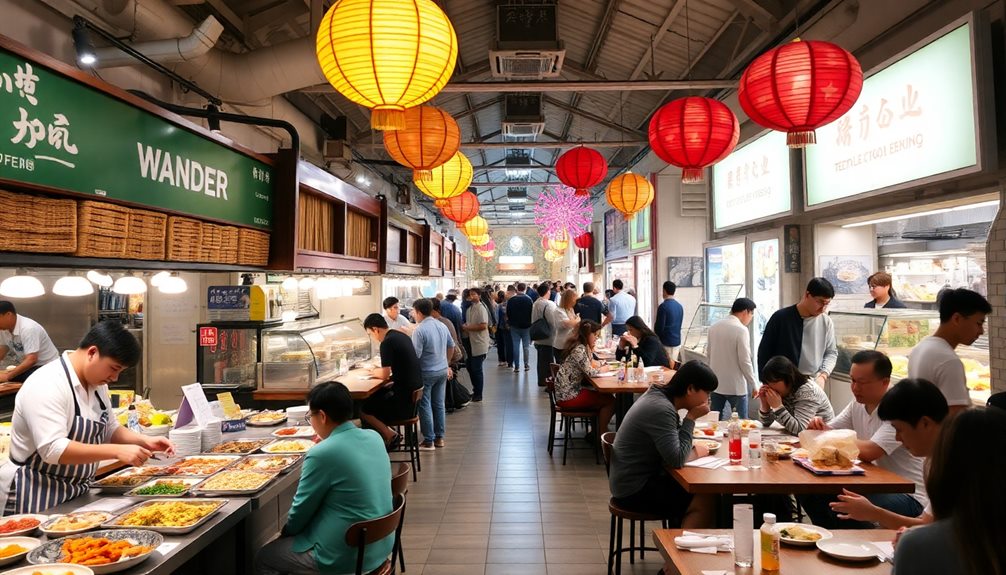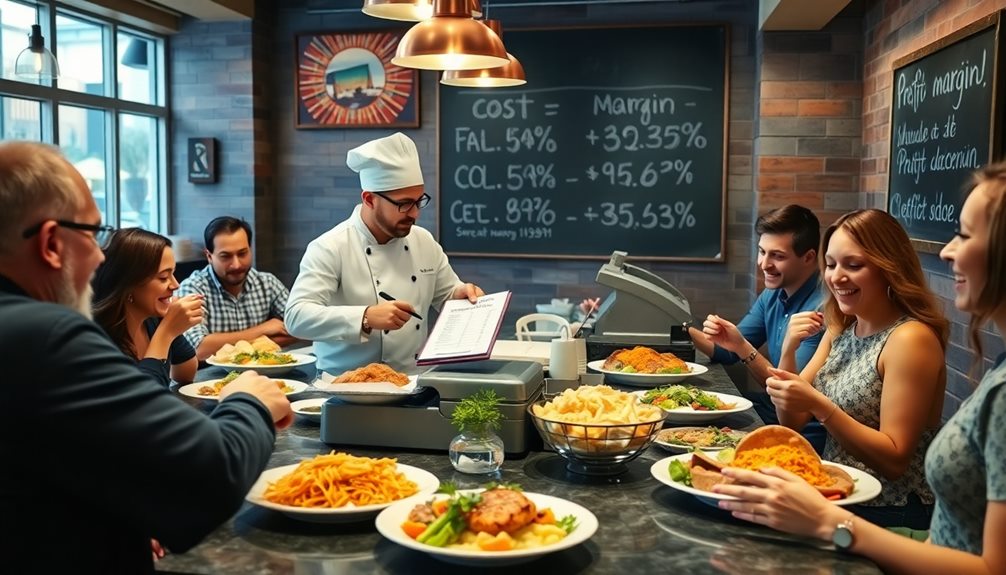A food hall is a lively marketplace filled with various small food vendors, offering unique culinary experiences under one roof. They've become increasingly popular, growing from 220 locations in 2019 to about 360 in the U.S. by 2024. This trend appeals to your preference for diverse dining options and affordability, as most meals cost under $15. Food halls foster social interactions and attract younger generations seeking quality and health-conscious choices. As more open, you'll find them in urban and suburban areas alike, making them an exciting destination for adventurous eaters. Discover more about what makes them so special.
Key Takeaways
- Food halls are vibrant marketplaces with multiple small food vendors offering diverse and authentic culinary experiences under one roof.
- Their rise in popularity is driven by younger generations seeking unique dining options and affordable meals under $15.
- Food halls promote social interactions and community engagement, often featuring entertainment like live music and themed events.
- They are expanding from urban centers to suburban areas, making them more accessible to a wider audience.
- A focus on locality and diverse menus, including women-led and minority-owned businesses, enhances their appeal and fosters community connections.
Definition of Food Halls
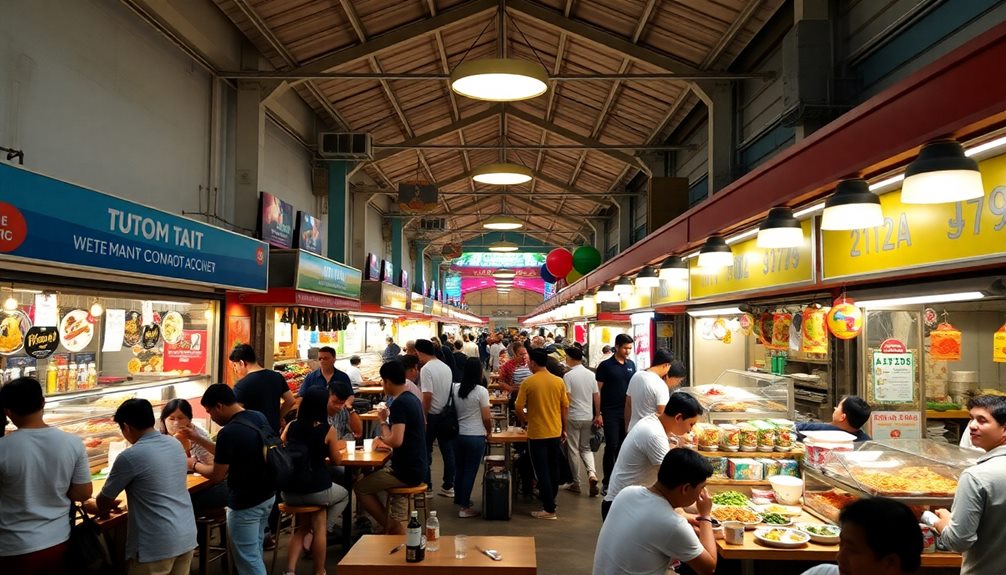
A food hall is fundamentally a vibrant marketplace where you'll find multiple small, locally-developed food vendors, each offering unique culinary delights. Unlike traditional food courts filled with national chains, the food hall concept prioritizes authenticity and diversity.
Here, you can explore a range of cuisines, from local favorites to international dishes, all crafted from scratch. You'll notice that food halls often occupy repurposed historic buildings, adding character and charm to your dining experience.
This casual atmosphere encourages social interactions among patrons, making it more than just a place to eat. Instead, it's a communal gathering spot that showcases the creativity of local chefs and entrepreneurs.
As of 2024, the U.S. boasts around 360 food halls, with an additional 127 in development, highlighting the growing demand for unique food options. This trend reflects a broader shift in dining preferences, where people seek out distinctive meals and experiences rather than cookie-cutter offerings.
Rise in Popularity

Food halls' popularity has skyrocketed in recent years, transforming the dining landscape across the U.S. As of 2024, there are approximately 360 food hall locations, a significant increase from 220 in 2019, with another 127 under construction. This growth reflects a strong consumer interest in this emerging restaurant trend.
About 39% of Americans have dined at a food hall, and 3% visit one weekly, showing how appealing these spaces are.
Gen Z and Millennials are at the forefront of this trend, with 77% of hybrid workers having experienced food halls compared to 70% of those working fully on-site or remotely. The demand for diverse culinary options drives this popularity, as 55% of potential patrons seek varied menus that cater to different tastes and dietary needs.
Even with economic challenges like inflation, 31% of Americans anticipate that food halls will gain even more traction in the coming years. This resilience highlights their growing role in shaping modern dining experiences.
Unique Dining Experience
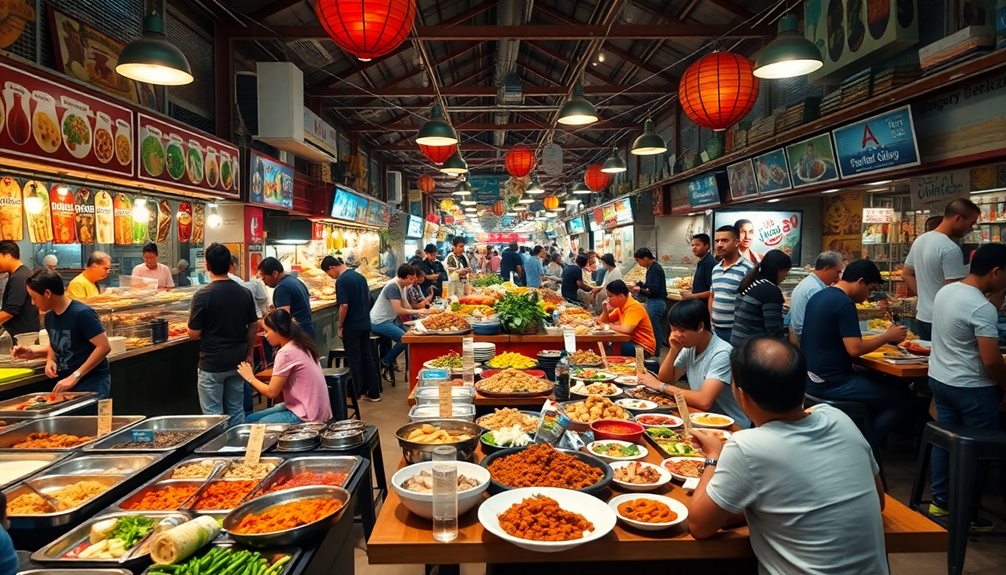
Offering a blend of diverse culinary options, food halls create a unique dining experience that captivates adventurous eaters. Unlike traditional food courts, food halls feature a curated collection of small, locally-developed restaurants. You can explore globally-inspired cuisines in one vibrant space, making it easy to try something new without the risk of disappointment.
Many food halls also showcase local artists, enhancing the atmosphere with live music, much like best restaurants with live music in various cities.
Here are a few aspects that enhance this experience:
- Authentic Offerings: You'll find street food-style dishes and innovative menu items that reflect cultural diversity.
- Affordable Dining: With average meal prices under $15, you can enjoy quality dining experiences without breaking the bank, especially amid rising restaurant costs.
- Vibrant Atmosphere: Many food halls incorporate entertainment elements like live music and themed events, fostering a lively social environment.
This combination of unique food offerings and engaging atmospheres draws a diverse crowd, making food halls a revitalizing alternative to the traditional restaurant industry.
Whether you're a foodie enthusiastic to explore or just looking for a casual dining experience, food halls provide an opportunity to satisfy your cravings and enjoy a memorable outing.
Demographics of Food Hall Visitors
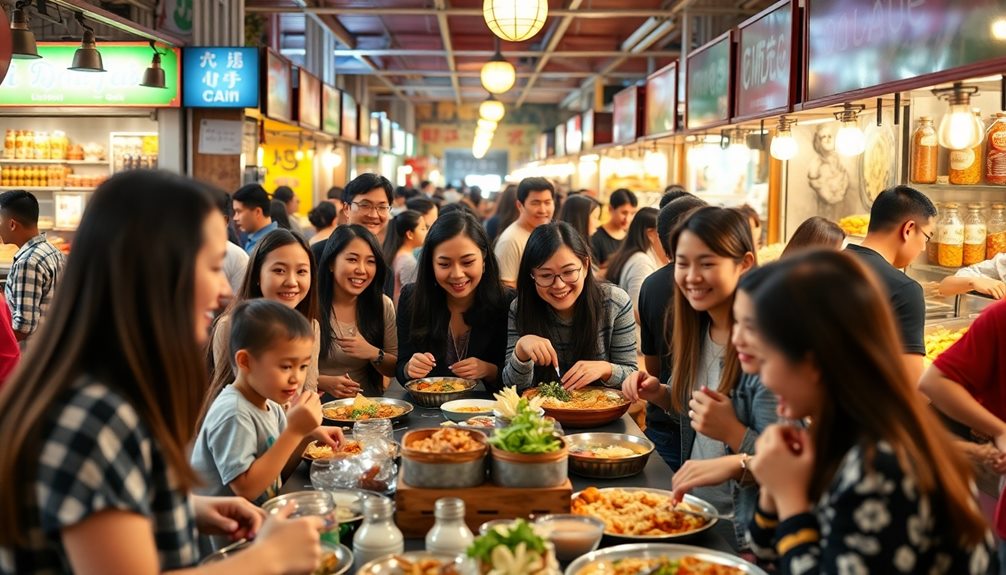
Diners flock to food halls for their vibrant atmosphere and diverse culinary offerings, making them a popular choice among younger generations. Gen Z and Millennials lead the charge, with a significant percentage having dined at food halls compared to only 13% of Baby Boomers and 21% of Gen Xers.
If you're living in an urban area, you're likely among the 71% who are aware of food halls and their appeal. Suburban consumers follow closely at 66%, while only 21% of rural residents express interest.
Hybrid workers particularly favor food halls, with 77% having visited, outpacing both fully in-person (70%) and remote workers.
When you consider where to eat, you probably value diverse menu options, which 55% of potential food hall visitors prioritize. This variety often includes offerings from independent restaurants, enhancing the culinary experience.
Despite economic concerns, especially inflation impacting 59% of diners, 40% of those interested in food halls feel less worried about rising costs.
This trend highlights the unique draw of food halls, as they cater to the preferences of younger, urban, and hybrid diners seeking diverse, affordable dining experiences.
Benefits of Food Halls
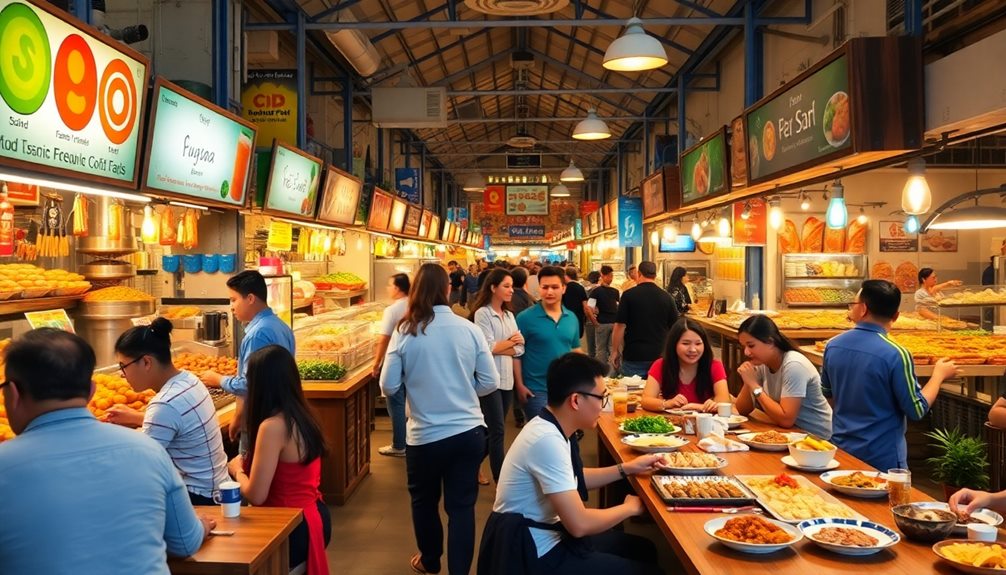
One of the key benefits of food halls is their ability to cater to diverse groups with varying food preferences, making dining out more enjoyable for everyone involved.
Unlike traditional food courts, food halls offer a variety of global cuisines, which means you can satisfy your craving for anything from tacos to sushi in one location. This diversity not only accommodates picky eaters but also encourages exploration of new flavors.
Additionally, food halls typically keep meal prices under $15, appealing to budget-conscious consumers looking for affordable dining options amid rising restaurant costs. You'll find that there's something for everyone without breaking the bank.
Moreover, many food halls combine dining with entertainment, creating a vibrant atmosphere that encourages social interaction among patrons. You might even catch live music events on weekends!
- Promotes inclusivity by featuring women-owned, immigrant-owned, and BIPOC-owned culinary concepts.
- Often repurpose vintage buildings, enhancing community revitalization.
- Provide a unique and inviting aesthetic that enriches your overall dining experience.
In a world where food and beverage choices are expanding, food halls stand out as a modern solution for social dining.
Challenges and Limitations
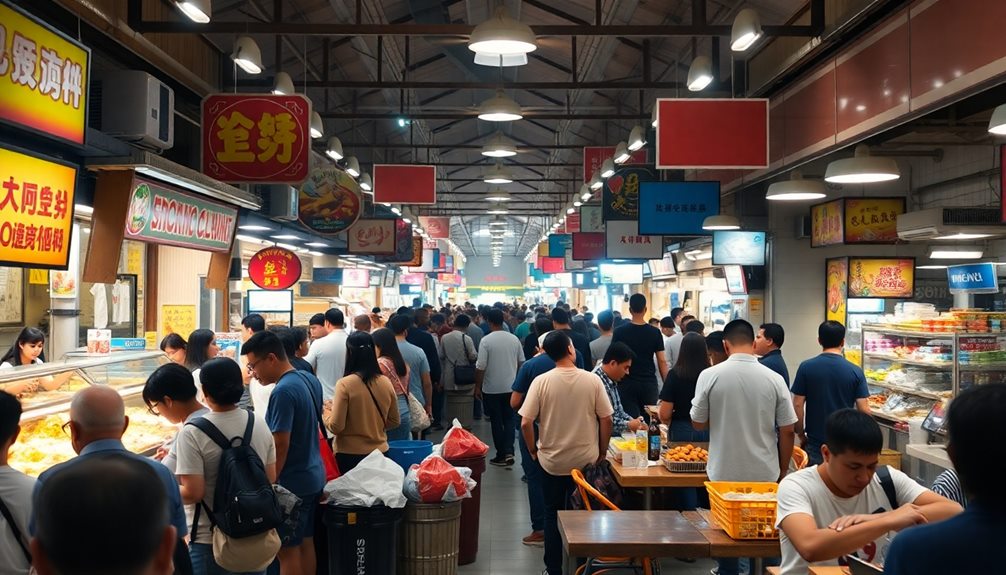
While food halls provide an array of benefits, they also face significant challenges and limitations. One major issue is accessibility; a staggering 69% of consumers report having no nearby food halls, especially in rural areas where that figure rises to 86%. This lack of proximity can hinder their popularity and growth.
Additionally, the overwhelming choices at food halls can lead to choice paralysis, making it tough for you as a diner to settle on what to order.
Logistical challenges are another hurdle. Coordinating orders and finding enough seating for larger groups can detract from the overall dining experience, causing frustration.
Furthermore, many food halls struggle to establish sustainable business models. Reports of market saturation and food hall fatigue in major cities raise profitability concerns that can jeopardize their longevity.
Lastly, economic pressures, like declining third-party delivery sales and shifting consumer habits, amplify these challenges. As the food hall industry navigates these issues, it's vital for operators to adapt and innovate if they want to thrive in this dynamic market.
Future Trends and Outlook

As you explore the future of food halls, you'll notice a shift in dining preferences that favors local, fresh options.
These venues are expanding beyond city centers into suburban areas, making them more accessible to a wider audience.
With an emphasis on locality and community engagement, food halls are set to thrive in the evolving culinary landscape.
Evolving Dining Preferences
Food halls are rapidly reshaping dining preferences, reflecting a broader trend toward experiential eating. As you explore these vibrant spaces, you'll find a diverse range of culinary experiences that cater to all tastes.
This surge in popularity isn't just a fad; it's driven by younger generations, especially Gen Z and Millennials, who prioritize quality and health-conscious options. In fact, visits to food halls are projected to increase by 36% in 2024.
Consider the following reasons why food halls are becoming the go-to dining choice:
- Diverse Menus: With multiple vendors, you can enjoy everything from gourmet tacos to artisanal pizza in one location.
- Casual Atmosphere: The relaxed environments encourage socializing, making meals feel more like an event than just a necessity.
- Economic Appeal: Despite rising costs elsewhere, 40% of diners are less concerned about expenses at food halls, viewing them as a worthwhile experience.
With 127 new food halls in construction, it's clear that the demand for innovative dining solutions is only set to grow, reshaping how you enjoy your meals.
Expansion Into Suburbs
With the rise of food halls, suburban areas are becoming the next big destination for culinary exploration. You might notice that consumer interest in visiting food halls has surged by 36% over the past two years, leading to a wave of new developments. Currently, around 127 food halls are in the works, many specifically targeting suburban locations to satisfy this growing demand.
Post-pandemic, people are seeking unique dining experiences and diverse culinary options, which suburban food halls can provide. CivicScience data reveals that 21% of rural consumers are enthusiastic to try food halls if they become available, signaling a significant opportunity for market growth.
These venues aren't just about food; they foster community engagement and cater to local tastes, making them resilient spots in the current dining landscape. As urban dwellers search for food hall experiences, you'll likely see these establishments flourishing in the suburbs.
This trend indicates that the food hall concept is adaptable and appealing, promising an exciting future for culinary enthusiasts in suburban locations. So, keep an eye out—you might find your next favorite dining spot just around the corner!
Emphasis on Locality
Locality is becoming a key ingredient in the evolution of food halls, transforming them into vibrant hubs of community and culture. You'll find that these spaces not only cater to your culinary cravings but also celebrate the richness of local flavors and traditions.
With a growing emphasis on local ingredients, food halls are increasingly showcasing dishes crafted by independent vendors, many of whom are women-led or minority-owned.
Expect to see trends like:
- Diverse, locally-inspired menus that resonate with your tastes.
- Unique culinary concepts that highlight authentic street food-style dishes.
- Repurposed historic buildings that enhance community engagement and urban culture.
As 62% of diners actively seek options featuring local ingredients, it's clear that you want culinary experiences that connect you to the region.
Furthermore, with 31% of Americans anticipating the rise of food halls prioritizing locality, you can look forward to more vibrant dining options that enrich your community.
This shift not only supports local economies but also fosters a sense of belonging, making food halls a cornerstone of modern urban life.
Frequently Asked Questions
Why Are Food Halls so Popular?
Food halls are popular because they offer diverse, budget-friendly menus that cater to your tastes. You enjoy unique experiences, socializing with friends, and savoring local ingredients, making them the perfect dining choice for today.
What Defines a Food Hall?
A food hall's defined by its collection of diverse, small vendors offering unique, locally-sourced dishes. You'll find an inviting atmosphere, often in repurposed spaces, creating a vibrant place for social interaction and culinary exploration. These spaces often blend the traditional dining experience with modern gastronomic trends, providing both communal seating and takeout options. As the food industry evolves, many food halls now feature innovative concepts like pop-up restaurants or digital-only eateries, prompting curious customers to ask, what is a ghost kitchen? A ghost kitchen is a streamlined, delivery-only setup without a physical dining space, which allows chefs to experiment and reach a wider audience with minimal overhead costs.
What Makes a Good Food Hall?
A good food hall's all about variety, comfort, and quality. You'll love diverse cuisines, engaging spaces for socializing, easy navigation, and lively entertainment. Plus, the delicious, freshly made offerings keep you coming back for more!
How Many Food Halls Are There in the US?
Right now, there are about 360 food halls operating across the U.S. This number's growing, with 127 more under construction. You'll find these venues offering diverse dining experiences in vibrant urban settings.
Conclusion
As food halls continue to rise in popularity, they're redefining how we experience dining. You might wonder what draws so many people in—could it be the diverse flavors, the sense of community, or the thrill of discovery? While they offer numerous benefits, challenges linger beneath the surface. Will these vibrant spaces adapt and thrive in the ever-changing culinary landscape? Only time will tell if they remain a staple or fade into the background of dining culture.
